10 Sculpture Parks Not To Be Missed
Any listing of the world’s top sculpture parks will be inherently narrow and arbitrary. Should parks that display the widest and finest collection of sculptures take precedence? Or sculpture parks that are most powerfully incorporated into the natural surroundings in which they are set? Or parks that most forcefully display the works of a single important artist?
The following are a few from each category, representing a global perspective. Clearly, the list isn’t comprehensive. Instead, it is meant to be a “bucket list” of places that art connoisseurs—if they are nearby— will want to discover.
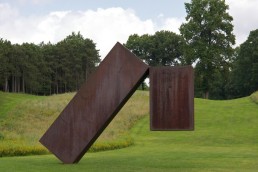
The Storm King Centre, Mountainville, New York, USA
The Storm King Art Centre — approximately 60 miles north of New York City in the Hudson River Valley — is renown for both the quality of its collection and its pastoral setting. Over 100 contemporary works are tastefully spread out over the 500-acre site, with the 2,100-acre Schunnemunk Mountain State Park serving as the park’s view shed. Works by Maya Lin, Andy Goldsworthy, Roy Lichtenstein, Alexander Calder, Henry Moore, and Magdalena Abakanowicz are part of the eclectic permanent collection of large-scale sculpture.
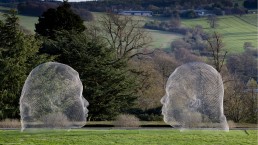
Yorkshire Sculpture Park, Wakefield, United Kingdom
A similar melding of art and landscape is the world-renown Yorkshire Sculpture Park, near Wakefield in West Yorkshire. Opening in 1977, it hosts approximately 80 outdoor permanent and temporary sculptures on its grounds, as well as being home to five indoor galleries. It is considered Britain’s first sculpture park and the historic Bretton Hall grounds were once an 18th-century estate. A myriad of contemporary sculptors’ works can be found here—Phyllida Barlow, Ai Weiwei, Roger Hiorns, Sol LeWitt, Joan Miró, and Dennis Oppenheim—and it hosts one of the primary outdoor European collections of the works of Henry Moore.
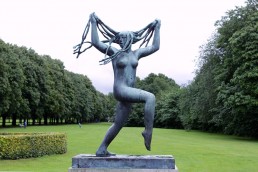
The Vigeland Park, Oslo, Norway
A very different kind of sculpture park from Storm King and Yorkshire is the Vigeland Park in Oslo, Norway. It is the largest sculpture park in the world dedicated to the work of a single artist, Gustav Vigeland. Located on the grounds of the historic Frogner Manor (which is home to the Oslo City Museum), it is at the centre of the largest green space in Oslo, Frogner Park. Over 200 bronze, granite, and wrought iron works by Vigeland are dispersed in a layout that the artist himself designed and oversaw from 1924 to 1943. The Monolith, The Angry Boy, and The Wheel of Life are some of the best-known pieces in the park.
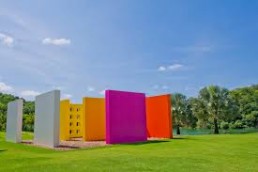
Inhotim, Brumadinho, Brazil
In a very different setting is Brazil’s Inhotim, located in the rain forest near Brumadinho. But like Vigeland, it is a physical space designed with a unifying vision. Created under the auspices of businessman Bernardo de Mello Paz, Inhotim is not only a world-class gallery and sculpture park but also a sprawling botanical park hosting many rare plants. The guiding vision is to sponsor “multidisciplinary activities” that have led to Inhotim consolidating “its role as a driving force for sustainable human development.” The 5,000-acre facility hosts a number of pavilions that display over 500 works by Brazilian and international artists, including pieces by Chris Burden, Cildo Meireles, Edgard de Souza, Olafur Eliasson, and Adriana Varejão.
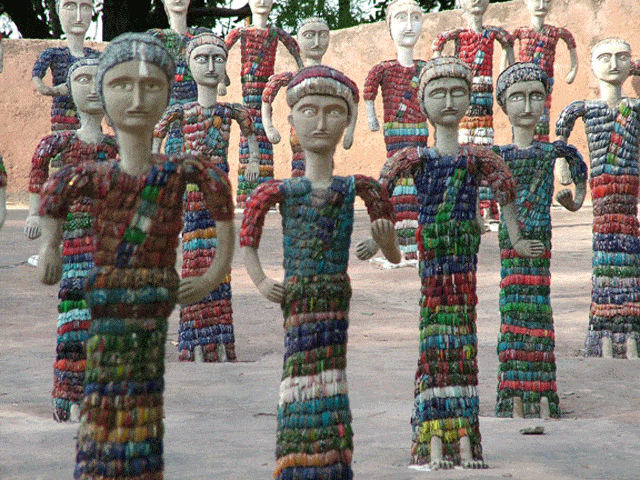
Rock Garden, Chandigarh, India
The vision of another individual, but one with far fewer resources than Mello Paz, is the Rock Garden of Chandigarh, India. It is home to over 2000 statues, waterfalls, and amphitheatres—all built by Nek Chand, a self-taught artist whose day job was as a government bureaucrat—and was begun in 1957. Over the course of the following decades, he built a personal vision that now covers 40 acres, with recycled refuse being the source material for virtually everything in the sculpture park. Once threatened with demolition by authorities, it now attracts up to 5000 visitors a day and has been visited by over 12 million people.
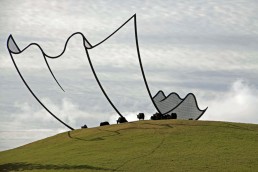
Gibbs Farm, Kaipara Harbour, New Zealand
A more mainstream sculpture collection is found at the Gibbs Farm, which is nestled on Kaipara Harbour—the largest harbour in the Southern hemisphere—north of Auckland, New Zealand. A private collection accumulated by businessman Alan Gibbs, many of the works were commissioned with their permanent location in mind. Arches by Andy Goldsworthy, Electrum (for Len Lye) by Eric Orr, A Fold in the Field by Maya Lin, and Floating Island of Immortals by Zhan Wang are some of the works that can be found in this stunning setting.
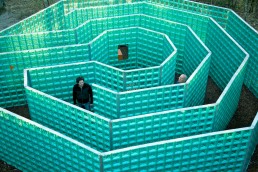
Chianti Sculpture Park, Tuscany, Italy
Likewise, Tuscany’s Chianti Sculpture Park is home to many pieces that were commissioned for the site. Prior to opening in 2004, artists visited the location—17 acres dominated by an oak forest—and were able to choose the location of the work they would create for that specific place. Works of artists from over 26 countries are dispersed throughout the park, with materials ranging from marble to neon lights to sound installations. It is both a significant representation of sculpture styles from around the world and also a facility steeped in its locality and a sense of place.
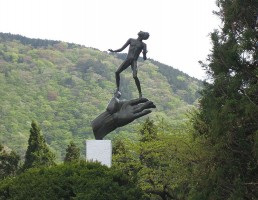
Hakone Open-Air Museum, Hakone, Japan
The Hakone Open-Air Museum opened in 1969 as the first outdoors sculpture museum in Japan. It is home to a large permanent collection of works by modern and contemporary sculptors, including one of the world’s most significant Pablo Picasso collections. Works by Auguste Rodin, Antoine Bourdelle, Joan Miro, and Henry Moore can also be found on the grounds, which are surrounded by mountains whose foliage changes with the seasons. There is also a significant art gallery at Hakone, which makes the 85-minute train ride from Tokyo well worth it.
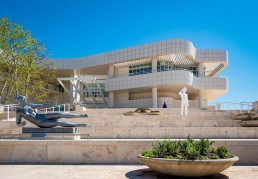
The Getty Museum, Los Angeles, California, USA
One of the newest sculpture parks in the world is also one of its finest. The Fran and Ray Stark Sculpture Garden at Los Angeles’s Getty Museum opened in 2006. Unlike many sculpture parks where works are commissioned with the landscape in mind, the Getty’s sculpture park was landscaped and designed around the sculptures from the collection that were installed. At the entrance of the Getty, the park includes not only works by Isamu Noguchi, Peter Shelton, Elizabeth Frink, and Henry Moore but also provides nooks and crannies for quiet solitude and majestic views of the city of Los Angeles below.
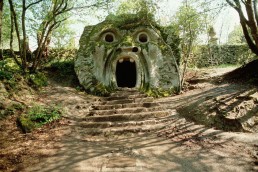
Sacro Bosto, Bomarzo, Italy
Finally, one of the oldest sculpture parks in the world is also one of the most unique and magical. The Sacro Bosco—better known as the Parco dei Mostri [Park of the Monsters]—dates to the 16th century. Designed by Pirro Ligorio, the architect who finished the Cathedral of Saint Peter following Michelangelo’s death, it can be found beneath the Castle of Orsini. Grotesque and imaginative sculptures are embedded in the woodlands and thick foliage, creating an eerie and unique experience. Salvador Dalí was a devotee of the park and it is believed to have informed his The Temptation of Saint Anthony. The park was largely overgrown and forgotten for much of the 19th and first half of the 20th centuries but—in part because of a film Dalí made about it in the 1950s—it was restored over the following decades.
These ten sculpture parks represent only a few of the best known and most unique from around the world. Art that is subtly interwoven into the surrounding landscape can be found at many other such places around the globe.
Get your free copy of Artland Magazine
More than 60 pages interviews with insightful collectors.